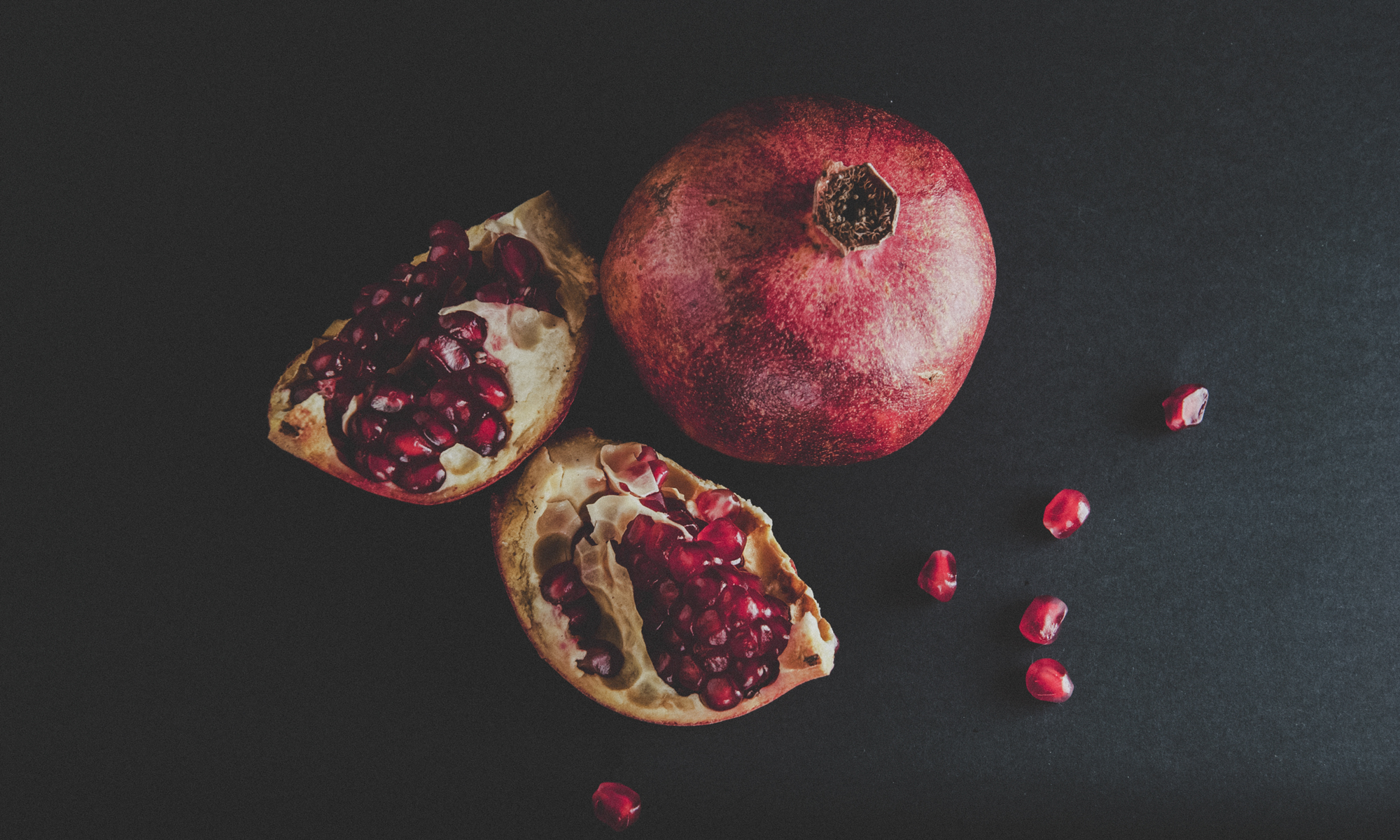Love pomegranate? Let’s get to know the true value of these “tiny little seeds”, inside and out! (Mostly inside.)
BY: HANNAH KALET, RD, LDN, MBA
I will confess- I only started eating pomegranates a couple of years ago. I wasn’t familiar with them and deemed them too high-maintenance for the tiny little seeds that seemed rather insignificant. It just seemed like too much work, until I figured out the perfect process. While it does require a bit more effort than say, cutting an apple, the little bit effort yields a great reward.
But before we get there, let’s get to why you should even eat these pretty little arils in the first place.
POTASSIUM
Electrolytes are what help your nerves and muscles communicate; they also
help move nutrients into cells, and waste out of cells. Potassium deficiency can result in problems such as muscle cramps, weakness and nausea, and at extreme levels can lead to complete shutdown of the heart and nervous system.
In addition, potassium and sodium work as the yin and yang in our systems. Potassium helps to excrete sodium – thereby opening blood vessels, lowering blood pressure and increasing kidney function. As Americans we consume too much sodium, so while we should work on decreasing our sodium intake, increasing potassium to offset the effects of sodium is important as well.
ANTIOXIDANTS
Oxidation is a chemical process that happens as your body performs its everyday functions- free radicals are formed from oxidation. Free radicals are unstable molecules that damage cells- over time this stress can damage our cells and tissues leading to inflammation and disease.
Antioxidants aid in stopping chain reactions that can damage cells and tissue. There are thousands of antioxidant compounds and studies have shown the most effective way to get antioxidants is through a diet rich in fruits and vegetables as opposed to taking supplements- antioxidants have been shown to strengthen your immune system and decrease your likelihood of developing inflammation, heart disease, neurological diseases and cancer.
POLYPHENOLS
Their main dietary sources are fruits, vegetables, legumes, chocolate and plant-derived drinks such as coffee, tea, some juices (such as pomegranate!) and red wine.
Current evidence strongly supports that polyphenols contribute to the prevention of inflammation, cardiovascular disease, cancers, and osteoporosis and suggests a role in the prevention of diabetes and neurodegenerative diseases.
FIBER
There are two kinds of fiber- soluble and insoluble. Soluble fiber can dissolve in water (and therefore in your digestive tract) but insoluble fiber is unable to dissolve which creates bulk in your stomach and digestive tract creating the feeling of fullness- since it cannot be broken down insoluble fiber moves through your digestive tract aiding in regularity and preventing constipation.
In addition fiber helps keep blood sugar and hunger in check, decreasing your risk of developing diabetes, it can also help lower bad cholesterol and prevent heart disease. Fiber is found in fruits, vegetables, legumes, nuts and whole grains.
So how do you properly cut & de-seed a pomegranate?
First, you need the following:
- a sharp knife
- sink w/ a large bowl of cold water
- an apron, a dark colored shirt, or old t-shirt (basically not your nicest wool or cashmere sweater as pomegranate juice can stain)
- mesh colander (*optional but recommended)
- bowl/Tupperware to store them in
1. Score (partially cut) the skin of the pomegranate the entire circumference of the fruit – you can cut all the way through if you’d like but this will pop some of the arils.
2. Once scored, tear the pomegranate apart into 2 pieces.
3. Take 1 of the 2 chunks of pomegranate and submerge under the cool water in your bowl. Carefully begin tearing apart the rind, freeing the arils from the rind and the skin inside. Basically just pick the arils free of the flesh. Allow the arils to fall to the bottom of the bowl. Throw away the rind and white flesh on the inside. Repeat with the 2nd half.
4. Now that you have the arils free, skim the remaining flesh off the top of the water and pour the bowl into a colander to get rid of the access water. Pick any other bits of flesh out that may have been left behind.
5. You’re done- enjoy nature’s version of a sweet-tart! Eat on their own or put on a salad, in yogurt, a smoothie, oatmeal or a cocktail.
6. To store, transfer to a bowl or a Tupperware container and store covered in the refrigerator for up to a week.
Enjoy these nutritious little gems!
Hannah Kalet, RD, LDN, MBA is a Registered Dietitian based in Boston, MA on a mission to help individuals understand that there is no such thing as a perfect, one-size-fits-all diet. Stemming from her philosophy that “health is wealth”, Hannah creates an environment that helps others understand how nutrition is the most vital component of your health.

